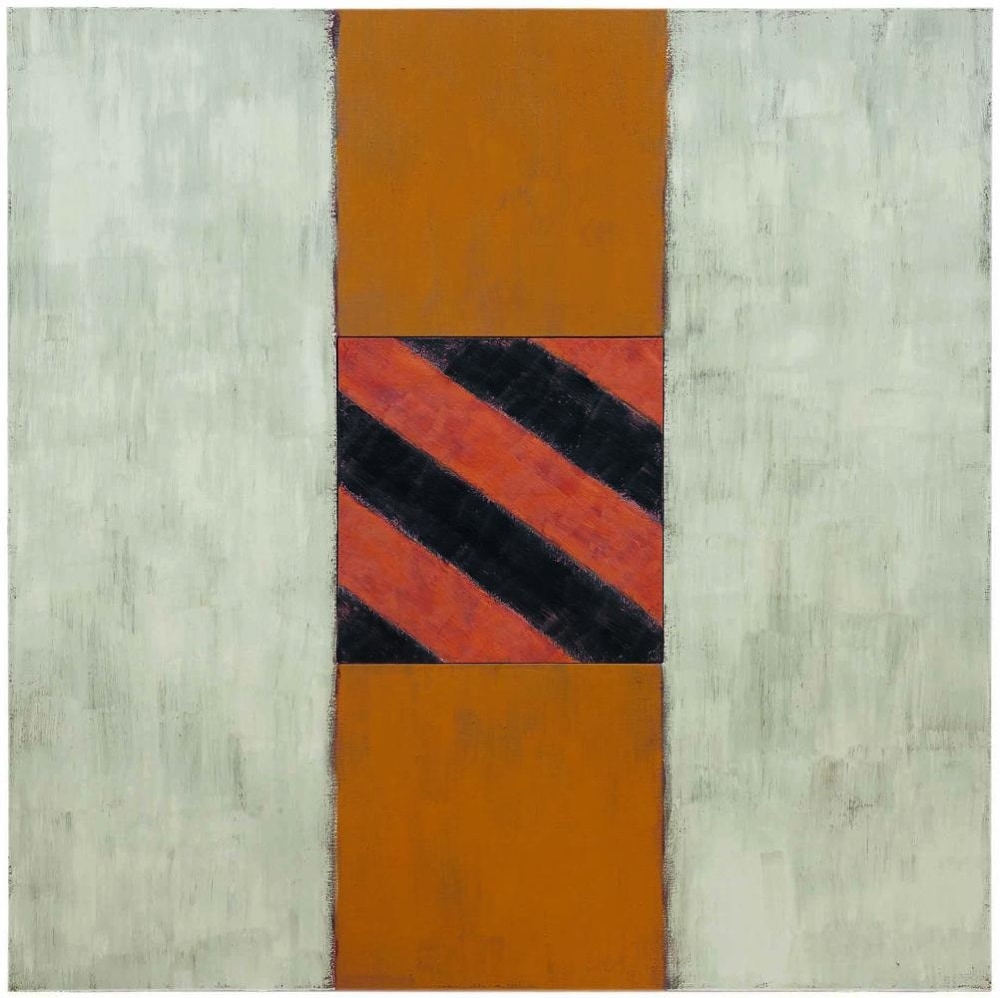
By Oliver Krug
SEA, land, and light. Montauk is a powerful place. Leaving the noise and hassle of the city behind, it is the basic concepts that move back into focus here. The Swiss writer Max Frisch observed about it the curious sensation of being able to do anything one wanted, as long as he wouldn’t speak of it, but put it straight into action. Consequently Montauk, his eponymous novel, looks at a man who is not afraid of taking on his own biography and tears down the protective wall that separated his life from artistic vision in a quest for authenticity. The result is a raw place where honest emotions are laid bare when the individual experiences of a lifetime are transported into the public realm. In Montauk, Frisch had found new artistic form at last, and strength, by shaking off a last staple of restrictions and conventions of the genre.
Sean Scully came to Montauk through a literary link as well, and he too left the place a different man, artistically speaking. Hailing originally from Dublin and then mostly London the young painter had only recently installed himself in New York, when he was invited onto a fellowship of the Edward Albee foundation in 1982. The offer consisted in a stay at the so-called Barn, for a month-long residency and artist retreat. Had they met, Frisch and Scully would have gotten on like house on fire. Frisch was a trained architect and Scully’s hands-on approach would have been to his liking. Having been at the same place the same time they could have gotten together while roaming the eastern peak of Long Island, and they might even have come across each other again later, back in New York, the place where Mnuchin Gallery has now mounted the first in-depth exhibition of Scully’s transformative paintings from this period.
Currently on show at Mnuchin Gallery New York, Sean Scully: The Eighties is a rare and excellent opportunity to delve into a crucial moment of the painter’s work and development as an artist. The foundations for Scully’s breakthrough can be found in those years, and in Montauk he had reached a watershed. Everybody was jumping ship in the 1980s, rapidly abandoning abstraction and bringing back the figure in the advent of neo-expressionism. Not so Scully, who instead took it upon him to develop and eventually transform for good the paradigm he had signed up for after leaving Europe. Otto Neurath’s dictum of the sailors desperately trying to mend their ship while on the open sea comes to mind. Scully was pretty much the last man standing on the raft of minimalism when he tried to fix the already deserted boat, attacking the vehicle’s very substance. At Mnuchin you can take a walk through living history of art and you can see how well Scully succeeded in his mission, against all odds.
For the task at hand wasn’t easy, dealing with a concept that was at danger of having maxed out it’s formal capacity to the point of emptiness, leaving next to no room for emotional content. In retrospect it might sound simple enough to point at the genre’s fault lines here, but we are, speaking with Neurath’s metaphor, trying to fix a plank while riding the heavy waves out on the ocean. And the notion of the plank is not far fetched either, as in the end the solution to more than one painterly dilemma came to Scully in the form of small wooden blocks lying around in the studio in Montauk, which he eventually started to paint on and bang together. With such playful act of experimentation the real world had entered the hollowed-out space of sterile minimalism.
Prototyping masterpieces from the following years, these splintery pieces of wood solved several problems in one go for the painter. Painting on the variably sized blocks and assembling and disassembling them showed the way beyond the rectangular fixation of the minimalist’s canvas. Integrating the individual’s conditions of life, the artist’s context and story with the material that surrounded him into his work, and at the same time abandoning the rigid formalism of hard-edged stripes, turned out to be the way forward from now on. Scully returned from Montauk with the warm touch of wood and an earthier palette and he now dared to show hand, so to speak, and probably his heart too, in lines and stripes much more human and open to multiple readings.
The greatest works followed and they are brought together for the first time now. The selection and the hang are tremendous. Stranger faces you here, just like a still from a theatre piece or a movie. It’s a static piece, condensing movement, a situation, a frozen moment or chance encounter, like a visual diary entry. The panels on the left and the right seem to slide open, letting in the stranger, a new order is looming behind opening curtains it seems, entering and presenting itself in horizontal lines.
The work’s construction is so intricate and sumptuous that it merits a long time of exploration. Please do stare. Memories triggered and emotions stirred will be the reward upon close inspection. Summer and A Green Place, both from the same year as Stranger, do let you off the hook easier. With colours of earth, clay and grass they offer a warm breeze to relax from the hard gaze, before you move on to the spectacular By Night and by Day, which reveals a new layer as soon as you think about the wooden blocks again.